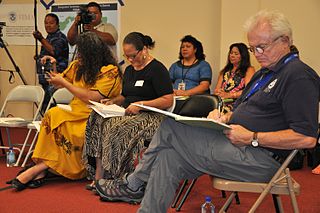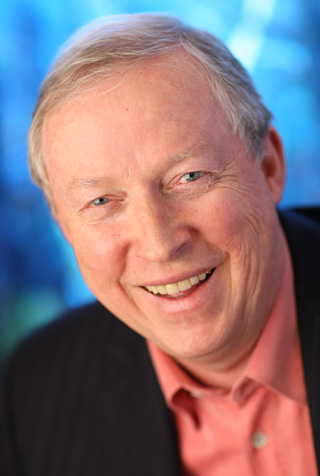
Public relations (PR) is the practice of managing and disseminating information from an individual or an organization to the public in order to influence their perception. Public relations and publicity differ in that PR is controlled internally, whereas publicity is not controlled and contributed by external parties. Public relations may include an organization or individual gaining exposure to their audiences using topics of public interest and news items that do not require direct payment. The exposure is mostly media-based, and this differentiates it from advertising as a form of marketing communications. Public relations aims to create or obtain coverage for clients for free, also known as earned media, rather than paying for marketing or advertising also known as paid media. But in the early 21st century, advertising is also a part of broader PR activities.
Ethical codes are adopted by organizations to assist members in understanding the difference between right and wrong and in applying that understanding to their decisions. An ethical code generally implies documents at three levels: codes of business ethics, codes of conduct for employees, and codes of professional practice.

The Australian Psychological Society (APS) is the peak body for psychology in Australia. The APS has more than 27,000 members, making it the largest professional body representing psychologists in Australia. The Society's Code of Ethics was adopted in 2007 and became the Code of Ethics for the profession in Australia in 2010 when it was taken up by the newly formed Psychology Board of Australia. The APS also provides members with recommendations of appropriate fees to charge for their professional services.
The Chartered Institute of Public Relations (CIPR) is a professional body in the United Kingdom for public relations practitioners. Founded as the Institute for Public Relations in 1948, CIPR was awarded Chartered status by the Privy Council of the United Kingdom in 2005 and added "Chartered" to its name. As of late 2012, CIPR had 10,095 members. The association provides training and education, publishes a code of conduct and hosts awards and events. It is governed by a board of directors led by a president who is elected each year.
The League of American Communications Professionals LLC (LACP) is an association established in 2001 in order to create a forum within the public relations industry that facilitates discussion of best-in-class practices within the profession while also recognizing those who demonstrate exemplary communications capabilities.
The International Association of Business Communicators (IABC) is a global network of communications professionals.
J.R. O'Dwyer Company is an online and print news and information publisher covering the public relations and marketing communications fields in New York City, established in 1968.
A student-run advertising agency acts like a real advertising agency, but is operated by students. The agency can be included in the academic curriculum, allowing students to work in the agency for academic credit. Or, the agency can simply be housed within the academic unit, allowing students to work in the agency for volunteer experience. In other cases, the agency can operate as a student club within the broader organizational structure of the university. The student-run agency provides advertising and similar communications services to various organizations such as college departments, small businesses, and community-based non-profit organizations. Some agencies compete with professionals and charge for services. Other agencies do all their work without charge. Other agencies have a philanthropic focus whereby communications work is conducted for free for nonprofits, while for-profit entities are asked to make a charitable donation to the agency to support its learner-centered focus. Most student-run agencies tend to take an integrated marketing communications focus, combining advertising with public relations and other services.

The Public Relations Institute of Australia (PRIA) is a peak body for public relations and communication professionals in Australia. It promotes high ethical standards in the public relations and communication industry through accredited membership, resources, training, and recognition.
Jeffrey R. Caponigro is an American public relations and marketing executive, entrepreneur, and former journalist. He is the founder and CEO of Caponigro Public Relations Inc., Southfield, Michigan, and the Executive Vice President-Corporate Communications and Chief Marketing Officer for Trion Solutions, Inc., one of the United States' largest HR-administration companies, with corporate headquarters in Troy, Michigan.
Richard Weiner was an American author, lecturer, lexicographer, and public relations consultant.
The International Association for Measurement and Evaluation of Communication is a UK-based global trade association for companies which provide social media measurement and traditional media measurement,evaluation and communication research.
The Accreditation in Public Relations (APR), Accreditation in Public Relations and Military Communications (APR+M), and Certificate in Principles of Public Relations are voluntary certifications in the US for persons working in the field of public relations (PR) and, in the case of the APR+M, military public affairs. They are administered by the Universal Accreditation Board.

Maxim Behar is a Bulgarian businessman of Jewish descent. He is the CEO and Chairman of the Board of M3 Communications Group, Inc, a public relations and public affairs company and a Hill+Knowlton Strategies partner since 2000. Behar is also president of the International Communications Consultancy Organization, board member of PR Museum in New York, and a frequent speaker at national and international events. He is also Chairman of the Board of World Communications Forum in Davos.
Larissa A. Schneider Grunig is a public relations theorist and feminist, and she is known as one of the most published and influential scholars in public relations. A professor emerita at the University of Maryland, College Park, Department of Communication, Grunig taught public relations and communication research since 1979. Based on a content analysis of three academic journals from their foundation through the year 2000, Grunig was recognized as one of the five most prolific authors contributing to public relations theory development. Her research focuses on public relations, development communication, communication theory, gender issues, organizational response to activism, organization power and structure, ethics, philosophy, scientific and technical writing, and qualitative methodology.

Betsy Ann Plank is commonly referred to as the first lady of public relations. In her 63-year long career, she achieved many first in public relations leadership positions for women.

James E. Lukaszewski (loo-ka-CHEV-skee) is an author, speaker, crisis management consultant and president of The Lukaszewski Group Division, Risdall Marketing Group. He is a recipient of the Patrick Jackson Award for Distinguished Service to the Public Relations Society of America and PR News’ Lifetime Achievement Award.

James "Jim" Hoggan is an author and president of Hoggan and Associates, a Vancouver-based public-relations firm. He is also the co-founder of the Web site DeSmogBlog.
A Fellow of the PRSA, or Fellow of the Public Relations Society of America, is an honorary designation granted to individuals by the Public Relations Society of America (PRSA). Established in 1990, persons named fellows are collectively known as the College of Fellows of the Public Relations Society of America; approximately 350 persons have been so named. Notable fellows include Daniel J. Edelman, James Lukaszewski, Richard Weiner, Betsy Plank, and Louis Capozzi.
Takashi Inoue is a public relations practitioner, scholar, and theorist. His theories include the "three forces of hyper-globalization", the "Self-Correction Model of Public Relations", and the "Japan model". He was the first to teach public relations courses at a major university in post-war Japan and is the Chairman and CEO of Inoue Public Relations, which he founded in 1970. He is a Visiting Professor at the Graduate School of Management, Kyoto University and at Kobe Institute of Computing. He was quoted in foreign press reports on the East Japan Earthquake and the 2018 arrest in Japan of Nissan chairman Carlos Ghosn. He has written about modern Japan's lack of PR skills and has described the resulting "Deficiency of Japanese diplomacy", and in 2010 he wrote that corporate Japan's scandals have created "A culture of apologies: Communicating crises in Japan"










